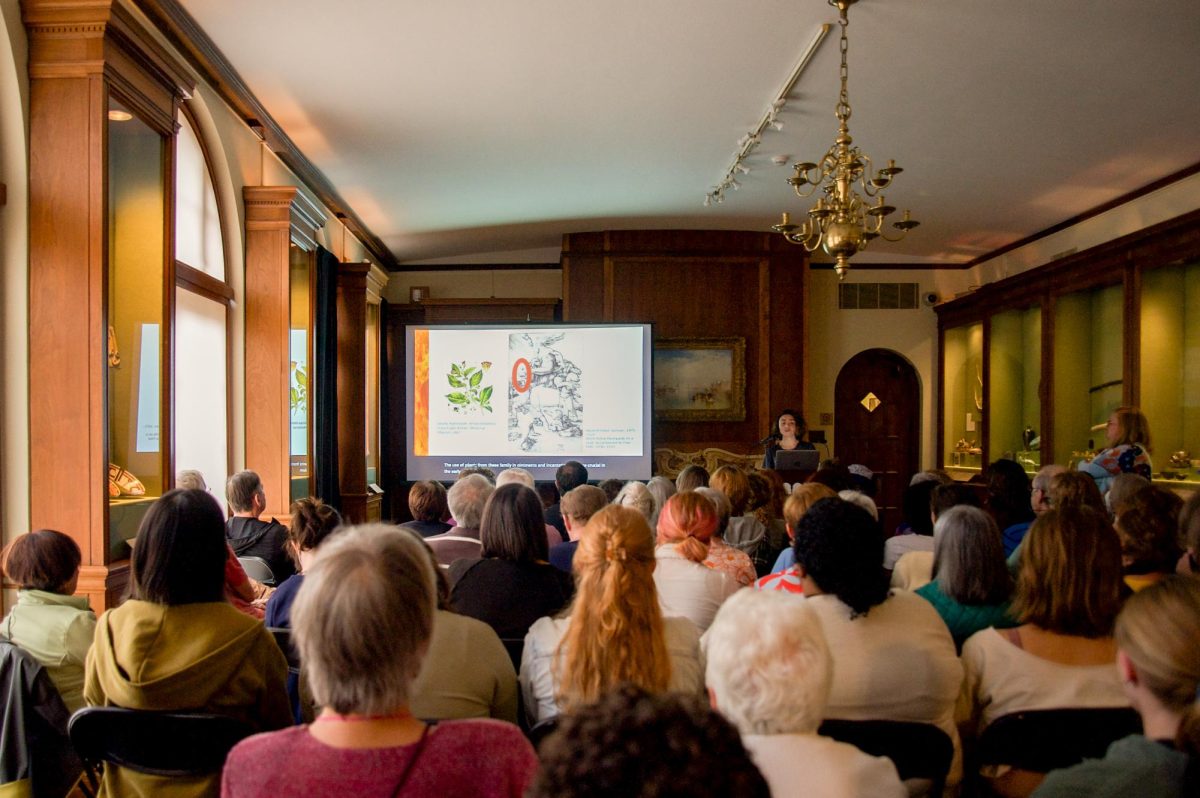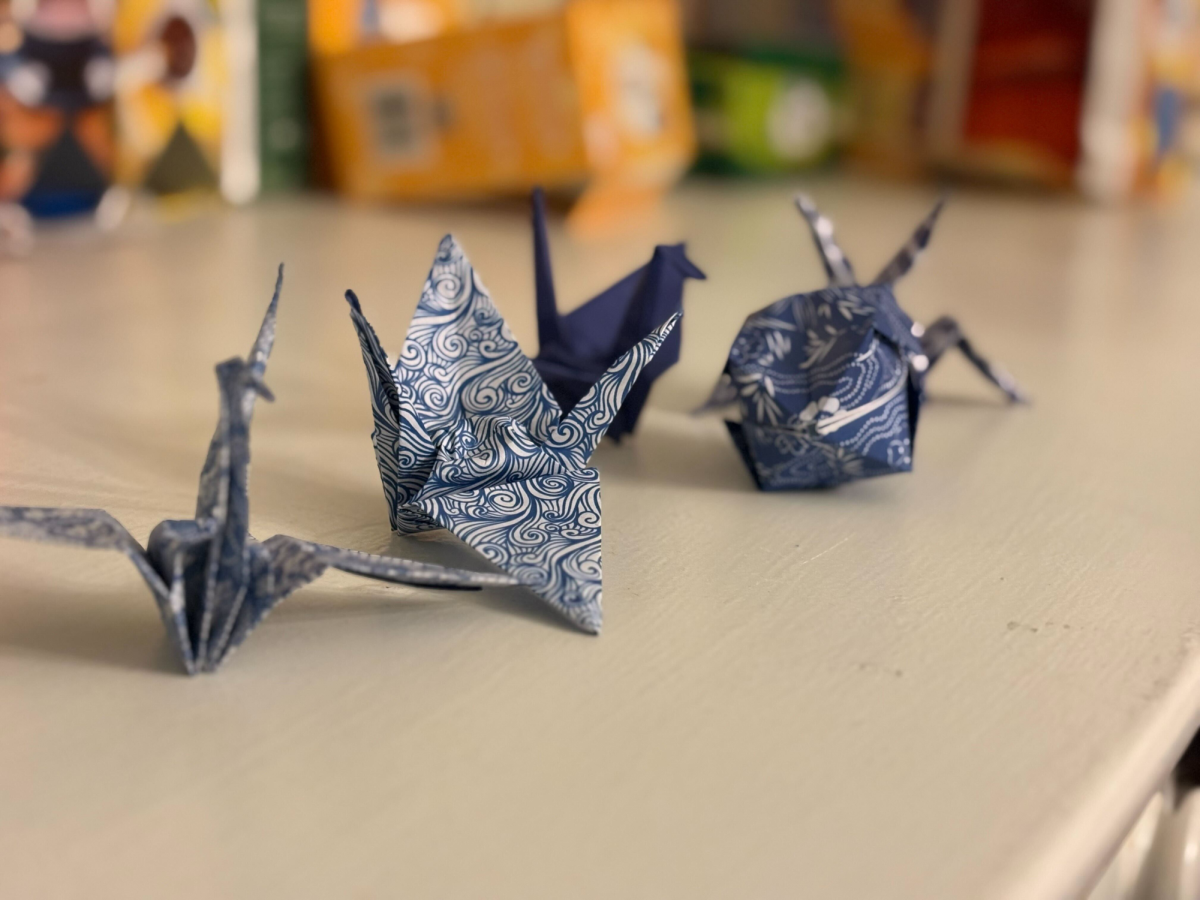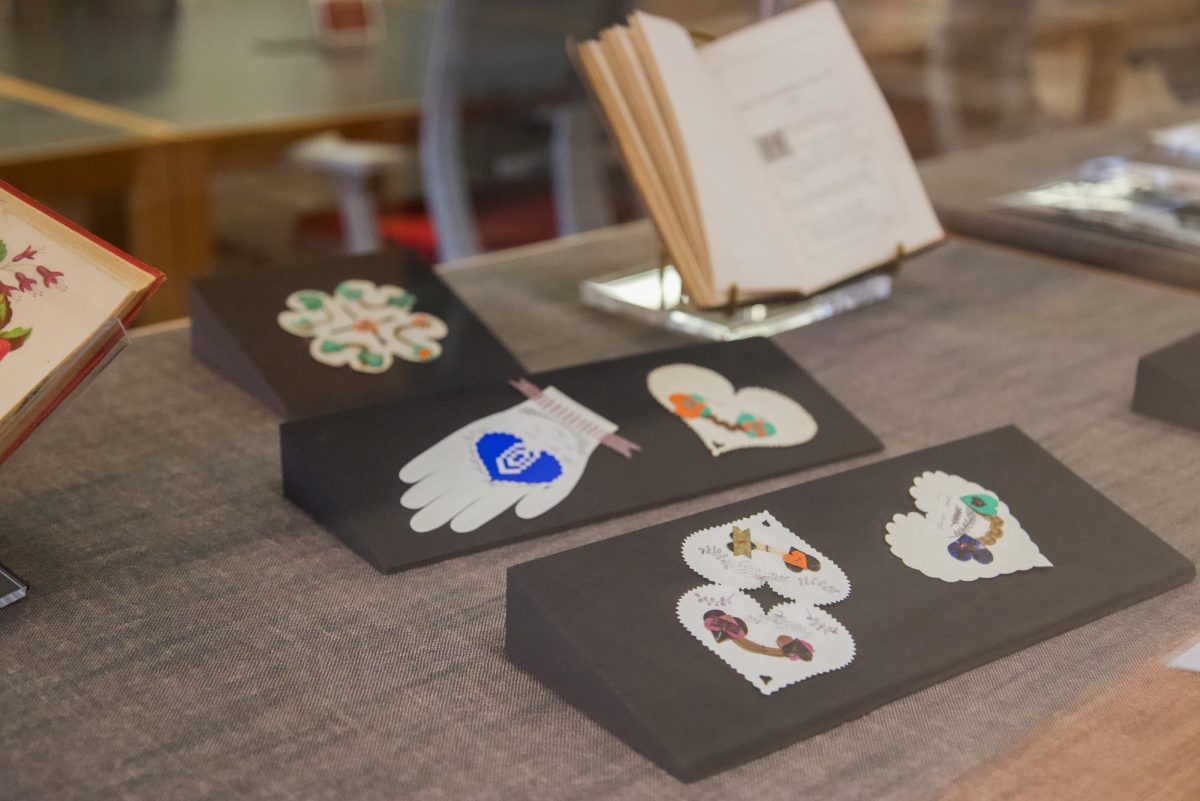On Tuesday, the Allen Memorial Art Museum hosted a talk titled “Witchcraft and Power in European and American Art” as part of their Tuesday Tea series. Attendees filled the space, occupying every pre-set chair, perching on extra stools, and standing around the periphery of the room. Clearly, the event garnered interest — not just from Oberlin College students, but from the wider Oberlin community.
The speaker of the event, Eric and Jane Nord Associate Professor of Hispanic Studies and Chair of Hispanic Studies Ana María Díaz Burgos, opened her presentation with an overview of the history of witchcraft during the Spanish Inquisition. She discussed in depth how the Inquisition persecuted witches, highlighting the association between female sexuality and witchcraft. The persecution of witches has been a way to subjugate women across many culture, and the Spanish Inquisition was no different. She also noted that, often, defendants put on trial by the Inquisition were not informed of the fact they were being charged nor of the descriptions of their charges. Sometimes, torture and isolation were used to force confessions. The history she outlined was dark and painful.
During the second part of her talk, Díaz Burgos spoke about the exhibition, “What’s in a Spell? Love Magic, Healing, and Punishment in the Early Modern Hispanic World.” She and two of the classes she taught, Saints, Sinners and Other Cursed Women and Inquisitorial Practices: Heretics, Torture & Fear, worked for over a year alongside Hannah Wirta Kinney, curator of academic programs at the AMAM, to research, plan, and curate the exhibit. In her presentation, she focused on three artists featured in the exhibit: Albrecht Dürer, Francisco de Goya, and Romare Bearden. After a close analysis of pieces by each artist, she concluded that, in their art, Dürer feared the witches, Goya critiqued how society and the Inquisition treated them, and Bearden mourned them.
After her final statement, a hearty applause resounded through the room, and Díaz Burgos fielded questions about her history with the subject and more. In an interview, she outlined how she gained interest in this topic.
“I was introduced to witchcraft in college,” she explained. “However, I was interested in the subject since I was a teenager … And then when I was in college, I had an amazing class that was called Nuns and Witches, and I got to go to the Inquisitor archives in Cartagena de Indias. I really liked the opportunity to get to know all of this from not only the historical side, but also from the cultural perspective. Then, even though I came to the U.S. to do my PhD, and my primary focus was Neo-Baroque fiction, I had a class about Inquisition in Spain.”
When asked if she felt the presentation went well, she noted the audience’s engagement.
“I always can feel the temperature of the talk, not by the content … but the audience engagement. If I make a joke, and they laugh … they did. If I made a comment that was trying to see if they were paying attention, they were. And then the questions they had — I got questions about the curatorial process; I got questions about other traditions; I got questions — one that I really liked — about the difficulties of reading these texts, unearthing women’s voices. I love that question.”
The presentation was also well-received by students. College second-year Loie Schiller spoke about her personal connection to the presentation.
“I’ve always found the history of witches and witchcraft fascinating, especially as a tool to subjugate women,” Schiller said. “My family has a history of Celtic pagan witchcraft, so an important thing for me, my whole life, [has been] learning about that. I wanted to learn more about other cultures, versions of witchcraft, and what that looked like. I [enjoyed it] very much. I thought [Díaz Burgos] was really eloquent. I thought that the topic was fascinating, and the art pieces were really moving.”
Another attendee, College second-year Alex Lawler, emphasized the importance of the subject.
“I think it’s always important to learn about history in general, so that it’s never repeated,” Lawler said. “And that’s something that we can learn from. I think the history of women is really important. In this context, I think it’s important to dive into what is beyond the official documents, like what [Díaz Burgos] talked about in the lecture: what’s officially written down by the victors or the oppressors isn’t necessarily what’s really true. And I think that that’s really important especially when it comes to the Spanish Inquisition.”












